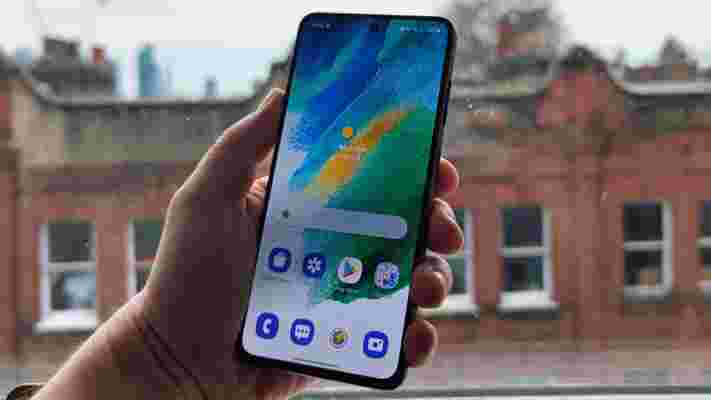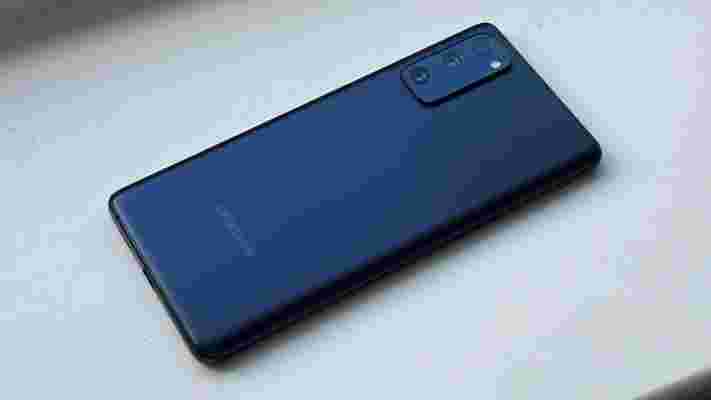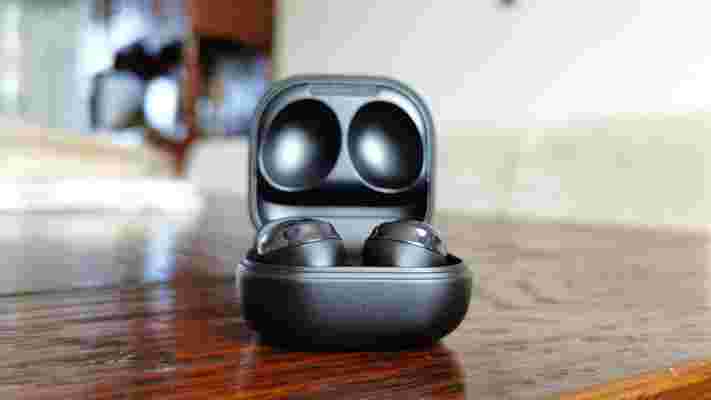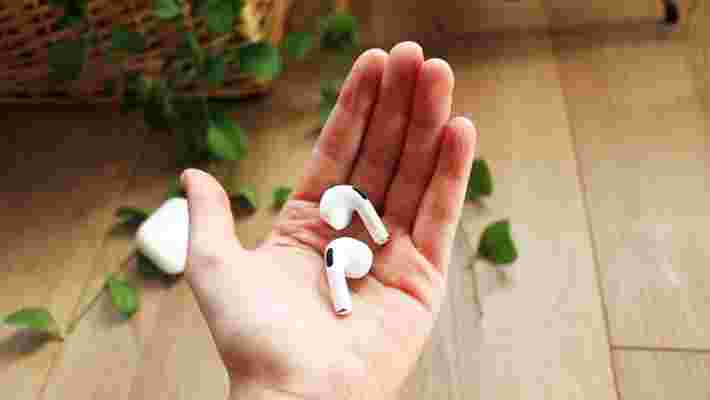The Samsung Galaxy S21 FE is finally here, after a huge delay and a frankly ludicrous number of leaks. It’s a phone that feels curiously out of sync, with the Samsung Galaxy S22 series right around the corner.
All of which stands in stark contrast to the Samsung Galaxy S20 FE , which seemed to arrive at just about the perfect time to blaze a new trail for thoughtfully remixed affordable flagship phones.
All of which sets up a tantalizing face-off. Which of these two ‘Fan Edition’ phones is the better buy as we head deeper into 2022?
Samsung Galaxy S21 FE vs Samsung Galaxy S20 FE price and availability
There’s no getting around it, the Samsung Galaxy S21 FE was seriously late to the party, and not in a fashionable way. It arrived around five months after it was expected, and a whopping 11 months after the rest of the Galaxy S21 range.
Prices start from $699 / £699 / AU$999 for 6GB RAM and 128GB storage, and there’s also an 8GB RAM and 256GB storage model for $769 / £749 / AU$1,099. This feels a little expensive given its inherently dated nature, not to mention the availability of mid-range phones like the Realme GT , Moto G200 , Pixel 5 , and the OnePlus Nord 2 for a lot less money.
The Samsung Galaxy S20 FE landed on October 2, 2020. Prices started at $699 / £699 / AU$1,149 for the 5G model, while in the UK and Australia a 4G model was also made available for £599 / AU$999.
Samsung still sells the phone brand new, with the 128GB model costing £499 in the UK, and just $350 in the US at the time of writing.
Design
The Samsung Galaxy S21 FE looks a lot like its Galaxy S21 brothers, with the same distinctive ‘Contour Cut’ camera bump. However, that bump is made of plastic in the FE, rather than metal.
In a similar way, the Galaxy S20 FE looks a lot like the Galaxy S20 range, but with a good deal more plastic.
In both cases, Samsung has gone with a pure ‘Glasstic’ body, which is a round-about way of saying plastic with a vaguely glass-like finish. Both phones feel a little cheap in the hand as a result, even if they are suitably tough.
Both benefit from IP68 ratings, which make them just as water and dust proof as flagship phones.
One improvement Samsung has made with the newer phone is that it’s more compact than the Galaxy S20 FE. At 155.7 x 74.5 x 7.9mm it’s just as tall and wide, but half a millimeter thinner. With a weight of 177g, it’s a not inconsiderable 13g lighter too.
There’s a more limited selection of colors available with the Galaxy S21 FE, however. You get just White, Graphite (black), Lavender (pink), and Olive (green). Contrastingly, the Galaxy S20 FE comes in Cloud Lavender (pink), Cloud Orange (pale orange), Cloud Red (red), Cloud Mint (blueish-green), Cloud White (white) and Cloud Navy (dark blue).
Display

With a 6.4-inch screen, the Samsung Galaxy S21 FE comes in with a fractionally smaller viewing area than the 6.5-inch Samsung Galaxy S20 FE.
Both have vibrant Dynamic AMOLED displays with fluid 120Hz refresh rates - and you can trust that a Samsung phone is going to come up with the goods in terms of screen quality.
We’ve got no issues here either way. Colors, contrast, and brightness are all on point, and both screens make video content and games sing.
From a design viewpoint, both have a hole-punch selfie notch in the top-center of the display, too. Both screens are also flat.
One clear improvement with the Galaxy S21 FE display is its utilization of Gorilla Glass Victus, to grant it extra protection. The Galaxy S20 FE uses the older, weaker Gorilla Glass 3.
Camera

The Galaxy S21 FE’s camera set-up is essentially the same as that of the S21 and S21 Plus, except for a weaker telephoto element. The Galaxy S20 FE camera system, for its part, is very similar to the Galaxy S20 range.
This might appear to grant a clear advantage to the newer phone. However, given that the Galaxy S21 range’s camera hardware went practically unchanged from the Galaxy S20 series, it’s not such a leap.
Both FE systems utilize a 12MP main camera sensor, an 8MP 1.1x telephoto, and a 12MP 123-degree ultra-wide. They’re very similar indeed.
Neither phone gets the 64MP telephoto of their more expensive brothers, which is the main weakness here. Both phones have 32MP selfie cameras too.
Any enhancements here come from the bump up in image processing power from the newer SoC, as well as any tweaks made to Samsung’s algorithms. Essentially, though, both camera systems capture vivid, bright, arguably oversaturated shots in a variety of conditions.
Another strength both cameras systems have is that they maintain a consistent tone across all three sensors. The same can’t be said for all smartphone camera systems, regardless of price.
Both benefit from Samsung’s software tricks, including Single Take, which captures short 5 to 15-second snippets and selects the best stills and video footage from it. Dual Recording allows you to record video on a rear and front camera simultaneously.
On the video front, both phones can capture 4K video at 60fps on the rear and the front.
Specs and performance
Perhaps the clearest advantage for the Samsung Galaxy S21 FE over the Galaxy S20 FE comes with performance.
Unsurprisingly, the newer phone has a newer chip in the Snapdragon 888 . The Galaxy S20 FE makes do with the previous generation’s Snapdragon 865 (or the equivalent Exynos 990 in 4G-only models).
What should be a source of triumph for the newer phone falls a little flat, however, and it all comes down to timing. At the time of writing, the Samsung Galaxy S22 with its Snapdragon 8 Gen 1 is right around the corner, not to mention a whole heap of direct rivals.
The Galaxy S21 FE may be more advanced than the Galaxy S20 FE, but only the latter was fast for its time.
Both phones offer either 8 or 12GB of RAM, and 128 or 256GB of internal storage. One outright win for the Galaxy S20 FE is that it also includes a microSD slot for expansion purposes, unlike the Galaxy S21 FE.
Still, there’s no denying that the Galaxy S21 FE is the faster phone of the two. More importantly, it’ll stay feeling faster for longer, as it’ll receive more ongoing support from Samsung.
Also in the Galaxy S21 FE’s favor is the fact that it’s 5G right across the world. As already mentioned, the Galaxy S20 FE came with 4G variants in certain countries.
Battery
Both the Samsung Galaxy S21 FE and the Galaxy S20 FE feature 4500mAh batteries. That’s fairly standard for a phone of this type, but we found the stamina lacking in both cases.
While we could get to the end of a full day of moderate usage with both phones, we tended to limp across the line. More intense usage would guarantee the need for a top up before bed time.
Samsung’s impressive suite of battery saver modes may well be called upon more often than is ideal if you opt for either of these phones.
The charging provisions are equally underwhelming. Both phones support a mere 25W charging when rivals are offering 65W and beyond. You don’t get charging bricks in the boxes, either.
Both phones support 15W wireless charging and reverse wireless charging, however, which is always welcome.
Takeaway
These are two very similar smartphones, with comparable designs, displays, and camera systems.
The Samsung Galaxy S21 FE has the edge when it comes to raw performance, but there’s still a sense of disappointment given how late the phone came to market. It’s going to seem a little outdated very quickly indeed, whereas the Galaxy S20 FE was competitive with its mid-range peers for a considerable spell of time.
That’s the overriding feeling we’re left with here. Objectively speaking, the Galaxy S21 FE is the better phone of the two, but its legacy is much less secure than the Galaxy S20 FE’s. It won’t be remembered as fondly by the ‘fans’ that gave both phones their FE monikers, that’s for sure.
What’s more, with the Galaxy S20 FE now going for hundreds of dollars/pounds less than the Galaxy S21 FE, it might just be the better buy - at least until its shiny replacement gets a hefty discount.
Sony stock drops $20 billion thanks to Microsoft/Activision Xbox deal
Stock in Sony plunged overnight by 13%, equating $20 billion lost in the company, in the wake of Microsoft's announcement that it will be purchasing Activision Blizzard .
According to Bloomberg and Eurogamer , this the largest fall in stock price in Sony's history since 2008.
Meanwhile, shares in Japanese companies, such as Capcom, Square Enix, and Konami, jumped by about 5%. Ubisoft's stock prices also went up by 11%.
The deal between Microsoft and Activision is worth $68.7 billion, which is nearly 10 times more what Microsoft paid to acquire Bethesda. The deal won't be finalized until 2023.
Sony's response? Preferably not its own buy out

This is undoubtedly one of, if not the biggest business deal in the games industry's entire history. Naturally, people are wondering how Sony will respond to the news, especially now that it has lost money as a result.
The obvious suggestion is that Sony make a major acquisition of its own. It's certainly no stranger to snapping up studios. In 2021, it bought out the likes of Housemarque and Bluepoint Games. However, neither are on the same level as this Activision one and both studios already had very close working relationships with Sony.
This idea has also been met with criticism from those who see Microsoft's deal as further consolidation of the industry and an act that doesn't benefit consumers or developers at all.
Our own Callum Bains said "The acquisition also represents the further monopolization of the gaming industry. With some of the world’s biggest games studios now held under one roof, answering to the same commercial interests, players, as much as developers, should be worried about what this deal means for the creative direction of the industry. Games aren’t just entertainment, they’re a business. And now a single business has control of a startling proportion of the industry’s output."
There's even speculation that the deal could violate anti-monopoly laws, which would result in the deal being rendered null and void. However, just as many suspect that it will sail through with little issue.
It's also unclear how much this deal will affect Sony in terms of game releases. The obvious assumption is that all of Activision's IPs (Overwatch, Diablo, Crash Bandicoot etc.) will become Xbox exclusives.
But Xbox Gaming CEO Phil Spencer has said "It’s not our intent to pull communities away from [the PlayStation platform] and we remained committed to that," which could suggest at least some of them will still be multiplatform.
Many believe this will apply to Activision's biggest IP, Call of Duty. The series has always performed well on PlayStation platforms, something that could be extremely beneficial for Microsoft if it could turn that tide.
Fans should prepare themselves for future Activision games to be Xbox only releases anyway. After all, this is what has happened with Bethesda , with the likes of Starfield so far only confirmed for Xbox and PC with nary a sign of a PlayStation 5 release.
AirPods 3 vs Samsung Galaxy Buds Pro: the true wireless earbuds compared
The Apple AirPods 3 have arrived and the big question is, how do they compare with many of our favorite true wireless earbuds? We’re pitting them against the Samsung Galaxy Buds Pro to find out which ones you should buy.
The Apple AirPods 3 are the highly-anticipated follow-up to the 2019 Apple AirPods - not to be confused with the Apple AirPods Pro , which also launched in 2019. The Pro buds are more high spec with support for active noise cancellation – something the AirPods 3 don't have.
However, the Apple AirPods 3 are more affordable, and draw inspiration from the mass-appeal design of the original AirPods. During our testing, we were impressed with the immersive spatial audio on offer, comfortable fit, and ease of use, awarding them 4 out of 5 stars. Saying that, with no noise cancellation, no customizable eartips and a so-so battery life, they’re not the best true wireless earbuds you can buy – especially if you have an Android device.
The Samsung Galaxy Buds Pro are among our top-rated true wireless earbud picks – bagging 4 out of 5 stars when we tested them. We liked the basic noise cancellation, audio performance and waterproofing, but they’re not perfect and much more likely to appeal to those with Samsung phones .
So which model is better, the AirPods 3 or the Samsung Galaxy Buds Pro? Does one pair of wireless earbuds outperform the other or is this a case of choosing your next buds based on your smartphone ? Read on to find out.

AirPods 3 vs Samsung Galaxy Buds Pro: price
The Apple AirPods 3 cost $179 / £169 / AU$279. That price is cheaper than the AirPods Pro, which will set you back $249 / £249 / AU$399, although that’s to be expected given the Pro are the high-end option.
The AirPods 3 are more similar in price to the 2019 AirPods, which cost $159 / £159 / AU$249 with the standard charging case, and $199 / £199 / AU$319 with the wireless charging case when they launched a couple of years ago (though they’ve since been given a permanent price cut).
Although this price isn’t cheap, it matches up with many of the middle-grade to high-end true wireless earbuds you can buy today. And it’s good to see Apple has kept prices for the regular AirPods on a level that’s more affordable than the Pro.

In comparison, the Samsung Galaxy Buds Pro cost $199 / £219 / AU$349. Although not quite as expensive as the higher-end options from the likes of Sony, Bose and Sennheiser, these are still a pricey pair of earbuds . If you’re looking for cheaper alternatives, you don’t have to look far: the Sony WF-SP800N and Jabra Elite 75t both offer active noise cancellation for $50 less if you don’t mind skipping out on the Samsung-specific features.
Although the Apple AirPods 3 are cheaper, the question of which is better value will depend on what you’re looking for, as these two pairs of buds have different things to offer in terms of design, performance and additional features.
AirPods 3 vs Samsung Galaxy Buds Pro: design
Whether you prefer the design of the AirPods 3 vs Samsung Galaxy Buds Pro will depend on your personal preference. Do you want the obviously Apple design of the AirPods with their stems or the shiny chrome Galaxy Buds Pro that sit closer to your ear?
The Apple AirPods 3 look like the 2019 AirPods, but there are some subtle differences. For starters, the stems of the AirPods 3 are shorter, the housing is rounded and more streamlined, and they feature force sensors you squeeze to control your music and phone calls. They also now have an IPX4 water resistance rating, which makes them suitable to wear to the gym or when you’re working out.
They lack interchangeable eartips, which means the fit isn’t super snug. Although we did find them comfortable to wear, we wouldn’t recommend them for intense exercise.

The Samsung Galaxy Buds Pro look completely different to the AirPods 3, with a rounded design available in three colors: Phantom Black, Phantom Silver and Phantom Violet, all have a high shine finish.
They’re fairly large for earbuds, measuring in at just under an inch (20.8mm) long. Although they don’t obviously stick out of your ear like the AirPods 3, they can look a little awkward and bulky.
The Galaxy Buds also jut out of your ear and during testing we had some trouble keeping them fully secure – luckily they do come with extra eartips, so it’s worth trying out all the options to see which give you the comfiest fit
However, they’re comfortable to wear for extended periods of time and don’t suffer from pressure build up thanks to an external vent.
AirPods 3 vs Samsung Galaxy Buds Pro: battery life
The Apple AirPods 3 offer a maximum battery life of 30 hours with the charging case, which supports wireless charging and is MagSafe-compatible. If you're in a hurry, a quick five-minute charge will give you about an hour of playback.
The onboard battery life is around six hours, which drops to five hours if you have Spatial Audio enabled.
As the Samsung Galaxy Buds Pro have noise cancellation on-board, the battery life will depend on if you’re using it or not.
Samsung promises five hours of listening on one cycle, after which the charging case can provide an additional 13 hours if you have ANC turned on. If you turn it off the buds will last seven to eight hours, and you can get upwards of 20 hours of battery from the case.
They also support fast charging and within five minutes on the charger there should be enough battery available for one hour of playback. Fast charging takes place via the USB-C port, but wireless charging is also possible, although it’s a bit slower.
In terms of battery life, the AirPods 3 are the overall winners, though there’s not much in it and the Galaxy Buds Pro have a longer onboard battery life.
AirPods 3 vs Samsung Galaxy Buds Pro: audio performance and features
The Apple AirPods 3 don’t offer noise cancellation, but we were impressed with the sound quality on offer here – a significant improvement over the second-gen AirPods. They come with new custom-made, low-distortion drivers and high dynamic range amplifiers.
They also offer Spatial Audio Support, placing sound in a 3D sphere around you to create a more immersive experience. They only support the SBC and AAC codecs, so you won’t be able to enjoy hi-res audio with the AirPods 3, but they’re not designed to be audiophile-grade headphones. Instead, they provide a perfectly enjoyable listening experience – particularly for music and films in Spatial Audio.
They also offer a bunch of additional features, like Audio Sharing, Announce Notifications, and integration with the Find My network, which all make the AirPods 3 a good option for use with an iPhone – but less appealing for anyone with an Android.
Most people will be happy with the sound offered by the Samsung Galaxy Buds Pro, but it isn’t class-leading. During our testing we found it to be lacking in detail and the soundstage was too narrow for our tastes. In other words, they won’t quite wow you like some higher-end earbuds would.
You can tweak the EQ of your Buds in the Samsung Wearable app – and we liked the Dynamic setting, but there isn’t the option to make the soundstage wider or fuller. Since their launch, Samsung has give the Galaxy Buds Pro 360 Audio support, which works similarly to Apple's Spatial Audio, but doesn't need a track to be mixed in 5.1 or above to work.
If you’re not listening to music with a Samsung Galaxy device, the sound of the Buds Pro will be transmitted over SBC or AAC, and both of these are lossy codecs. This means there’s a marked uptick in audio quality when you use them with Samsung’s Scalable Codec devices – like say the Samsung Galaxy Note 20 Ultra 5G – compared to a device that uses SBC, like the Google Pixel 3 .
Although the Samsung Galaxy Buds Pro do offer noise cancellation, it isn’t the best. They offer solid noise reduction but it’s never going to be absolutely silent while you've got them on.
Takeaway
This is a close race and, as we predicted, largely depends on the phone you have.
If you have a Samsung phone you’ll get more from the Samsung Galaxy Buds Pro, with better audio quality, Bixby support and more. The design is also slightly more subtle and the audio is good, but not great.
On the other hand, the Apple AirPods 3 are better for those with an iPhone. Connecting to an iPhone is easy and there are a bunch of features that will appeal to those with Apple products already, including hands-free Hey Siri activation, Announce Notifications, Audio Sharing, Group Facetime with Spatial Audio and more.
You’ll also get the unmistakable Apple design with slighter shorter stems and rounded casing. The sound quality might not be able to compete with the best headphones on the market, but thanks to the new tech baked in and Spatial Audio Support, the AirPods 3 are a solid choice for most people.
One reason you may opt for the Galaxy Buds Pro over the AirPods 3 is the Samsung earbuds’ support for active noise cancellation. However, there are better noise-cancelling earbuds out there, such as the the Bose QuietComfort Earbuds , as well as lots of excellent noise-cancelling over-ear headphones .